Victorian technology company RayGen Resources has secured $27 million of funding to build a 3 MW/50 MWh solar hydro power plant with 17 hours of storage in Carwarp, northwest Victoria. The project will demonstrate two new technologies: RayGen’s patented PV Ultra and its electro-thermal storage technology, for which a patent is pending. The company says these two technologies combined “aim to disrupt the economics of solar-plus-storage while offering improved grid security and reliability.”
The RayGen Power Plant Carwarp has attracted funding from the Australian Renewable Energy Agency (ARENA), who have allocated $15 million to the project, as well as “strategic investments” from AGL, Photon Energy, Schlumberger, and Chevron.
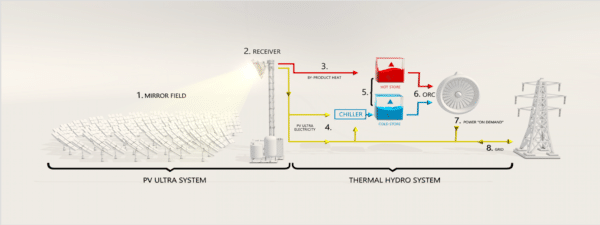
How RayGen’s ‘solar hydro’ power plant works, ARENA explains, is basically that the concentrated PV technology generates heat as a by-product which is captured and used for thermal storage. The electro-thermal storage system consists of an Organic Rankine Cycle (ORC) turbine, industrial chillers and two insulated water-based thermal storage pits or reservoirs, each roughly the size of four Olympic size swimming pools. One of the reservoirs is kept at a temperature of 90 degrees and the other at close to 0 degrees, and the temperature difference is used to generate dispatchable electricity using ORC turbines.
RayGen has been operating this technology for more than two years in its 1 MW pilot project in Newbridge, Victoria – which also received funding from ARENA. It’s expected that with the larger scale of the Carwarp plant, RayGen will be able to provide the the Low Emissions Technology Statement stretch goal of providing firmed renewables for under $100 / MWh.
ARENA’s CEO Darren Miller said the innovative technology provides an exciting opportunity to address Australia’s emerging longer duration storage needs. “Much like combining pumped hydro and a traditional solar farm, RayGen’s technology can provide longer duration firming for renewable energy generation. We are particularly interested in the potential for RayGen’s technology to deliver firmed renewable energy at a very competitive cost,” Miller said.
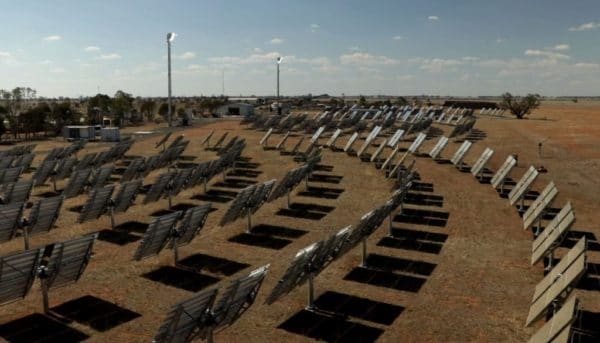
Low-cost storage attracts attention from major players
Australia’s largest electricity generator, AGL, will be an offtaker for the project. It is also collaborating with RayGen on a feasibility study to assess whether the technology could be installed at AGL’s Liddell facility, a major coal-fired plant in New South Wales scheduled to begin decommissioning next year.
“RayGen’s technology has the potential to provide the same capabilities as other long duration storage technologies at lower cost and with fewer geographical constraints. We believe the technology can be just as successful in the Hunter region and a key feature of our plans to transition the Liddell site into an Energy Hub, alongside grid-scale batteries and a waste to energy facility,” AGL’s Managing Director and CEO, Graeme Hunt, said in a statement.
RayGen Power Plant Carwarp details
The project will be developed in Carwarp, just south of Mildura, at a site with existing approvals for a solar farm. The project requirements fit within the scope of those approvals, according to RayGen.
The project will export renewable electricity to the National Electricity Market (NEM) and will also participate in wholesale energy and Frequency Control Ancillary Services (FCAS) markets once operational.
Perhaps most importantly though, the plant will provide 17 hours of storage to the West Murray grid, which is notoriously congested causing numerous renewables projects in the region to be curtailed.
The Carwarp project will be wholly owned by RayGen and is expected to reach commercial operation date in 12 months, with an operational design life of 30 years.
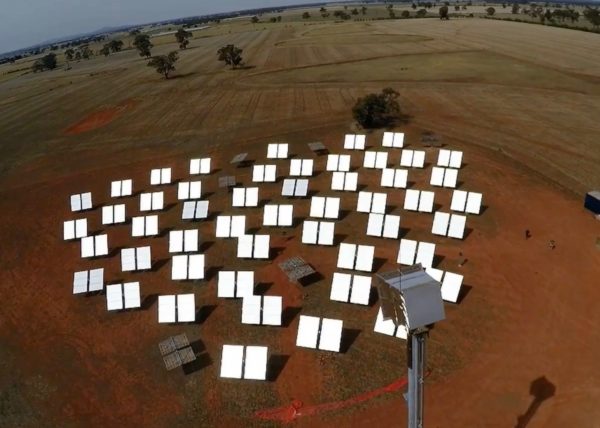
Image: RayGen Resources / YouTube
The Victorian technology company, which today has 35 staff, received a world record for solar system efficiency in 2014 in partnership with the University of New South Wales. It began its first PV Ultra project in 2015, supplying power to farms near Bendigo.
RayGen says in addition to the Carwarp project, money from its $27 million capital raise will go towards expanding the capacity of its module manufacturing line from 25 MW to 125 MW per annum, and will enable project development on its 1 GWh plus pipeline to reach financial close.
Other hats in the ring
Similar to AGL, the other private companies which have invested in RayGen’s project are keen to see how they could integrate the technology into their own operations. Schlumberger New Energy, one of the other investors, has executed a Joint Development Agreement for works to enhance the RayGen’s system design and will complete pre-feasibility studies for large green hydrogen and ammonia export projects.
Photon Energy and RayGen are also developing projects in Australia and internationally.
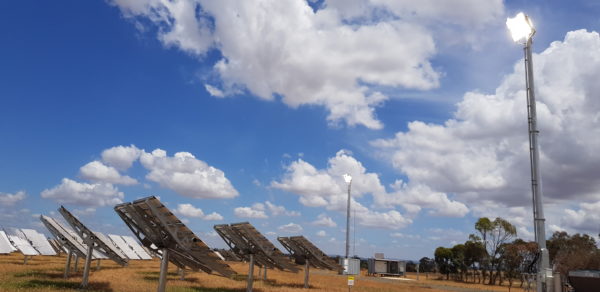
Image: RayGen
This content is protected by copyright and may not be reused. If you want to cooperate with us and would like to reuse some of our content, please contact: editors@pv-magazine.com.
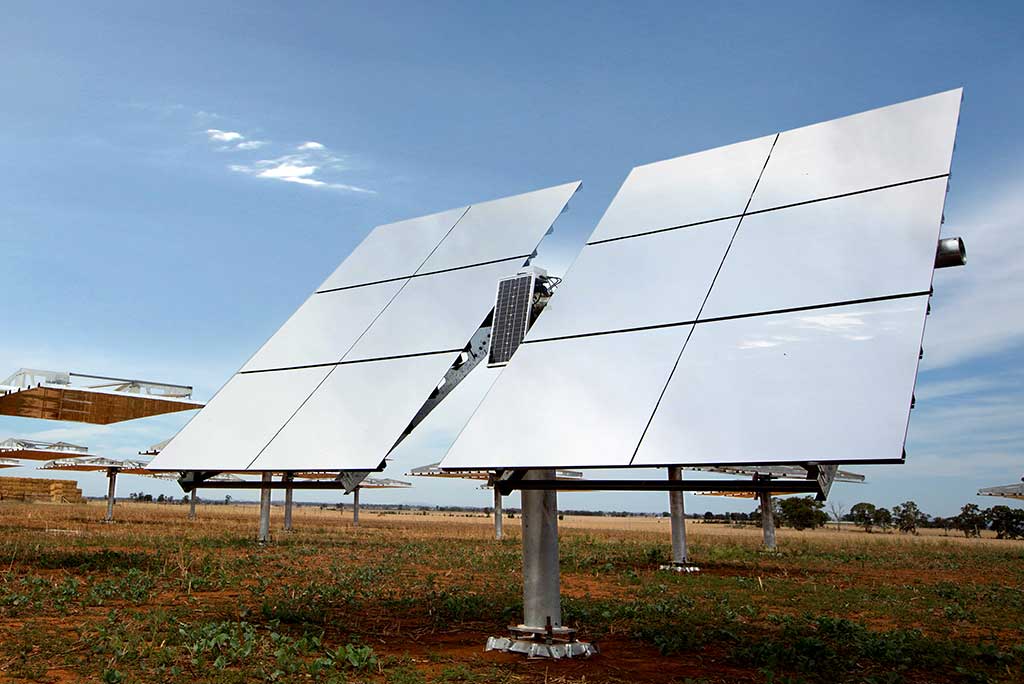








2 comments
By submitting this form you agree to pv magazine using your data for the purposes of publishing your comment.
Your personal data will only be disclosed or otherwise transmitted to third parties for the purposes of spam filtering or if this is necessary for technical maintenance of the website. Any other transfer to third parties will not take place unless this is justified on the basis of applicable data protection regulations or if pv magazine is legally obliged to do so.
You may revoke this consent at any time with effect for the future, in which case your personal data will be deleted immediately. Otherwise, your data will be deleted if pv magazine has processed your request or the purpose of data storage is fulfilled.
Further information on data privacy can be found in our Data Protection Policy.